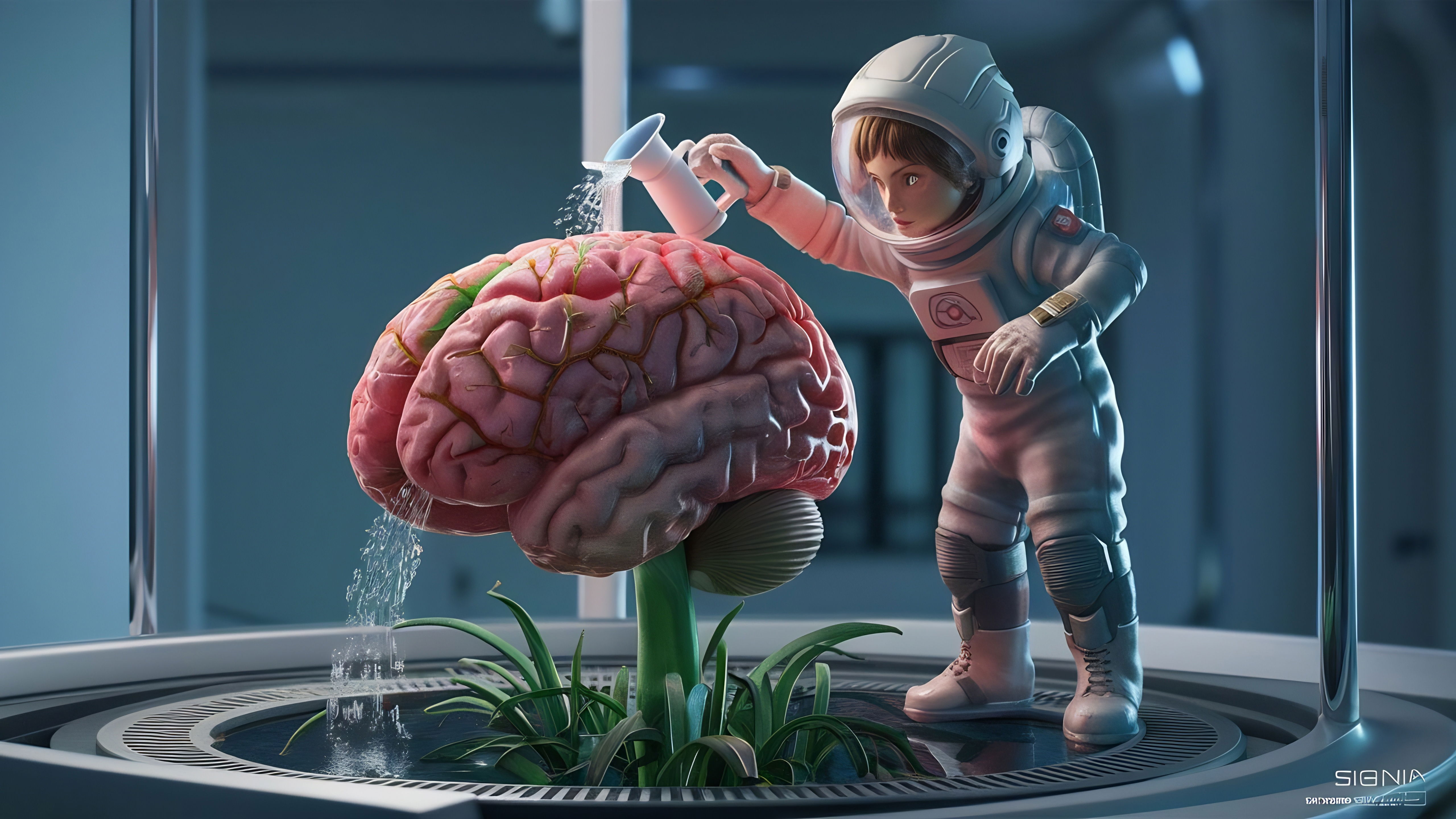NeuroNexus: Exploring the Frontiers of Neuroscience
Introduction to NeuroNexus
Welcome to NeuroNexus, your gateway to the thrilling frontier of neuroscience! The human brain, with its 86 billion neurons and countless connections, is the most complex system known. From decoding neural circuits to developing therapies for neurological disorders, neuroscience is transforming our understanding of the mind and body. Join us as we explore the latest discoveries, technologies, and stories at the nexus of brain science, offering insights into how these advances shape health, technology, and society.
The Brain: A Universe Within
The brain, a three-pound organ, orchestrates thought, emotion, and bodily functions through intricate neural networks.
Neural Architecture
- Neurons and Synapses: Neurons communicate via synapses, with 100 trillion connections in the human brain, per 2024 estimates.
- Brain Regions: The cortex, responsible for cognition, and the amygdala, tied to emotion, interact dynamically, per 2025 fMRI studies.
- Plasticity, the brain’s ability to rewire, studied in 2024, underpins learning and recovery from injury.
Brain Mapping
- Connectome: A 2025 project mapped 2 million neurons, revealing new circuits for memory, per Science.
- Technologies: Functional MRI and optogenetics, advanced in 2024, visualize neural activity in real time.
Neural Interfaces: Bridging Brain and Machine
Neural interfaces, devices that connect the brain to external systems, are revolutionizing neuroscience. Companies like NeuroNexus Technologies, Inc., founded in 2004, lead with microelectrode arrays for electrophysiology and optogenetics.
Types of Interfaces
- Microelectrode Arrays: Silicon probes, like NeuroNexus’s 16-channel designs, record neural signals with high precision and were used in 2025 mouse brain studies.
- Optoelectrodes: Combining light and electrical stimulation, these probes, advanced in 2024, study perception mechanisms.
- ECoG Probes: Flexible grids for electrocorticography, developed in 2025, map brain surface activity, aiding epilepsy research.
Applications
- Research: NeuroNexus’s Summa Framework, launched in 2022, streamlines data collection with tools like Activus™ Probes (1024 channels) and Radiens™ software.
- Clinical: Interfaces developed by NeuroNexus and Inscopix in 2021 enable brain function mapping for neurodegenerative therapies.
Electrophysiology: Listening to the Brain
Electrophysiology measures electrical activity in neurons, offering insights into brain function.
Techniques
- Single-Unit Recording: Captures individual neuron spikes, used in 2025 to study motor control in primates.
- Local Field Potentials: Measures collective neural activity, mapped in 2024 to understand memory formation.
Innovations
- SmartBox Pro™: NeuroNexus’s 2025 system supports 512-channel recordings, simplifying high-density experiments.
- Allego Software: Updated in 2025, it offers autocalibration and visualization tools, enhancing data analysis.
Neuroscience and Health
Neuroscience drives therapies for neurological and psychiatric disorders.
Neurodegenerative Diseases
- Alzheimer’s: A 2025 hackathon team, “NeuroNexus,” developed AI-driven biomarker detection using brain-on-a-chip models, improving early diagnosis by 20%.
- Parkinson’s: Deep brain stimulation, refined in 2024, reduced tremors in 85% of patients, per The Lancet.
Mental Health
- Depression: Neural interface studies in 2025 linked prefrontal cortex activity to mood, guiding targeted therapies.
- Anxiety: A 2024 study used optogenetics to modulate amygdala circuits, reducing symptoms in mice.
Neurocardiology
- Heart-Brain Link: UCLA’s Neurocardiology Center, using NeuroNexus probes in 2025, mapped cardiac neural signals, improving arrhythmia treatments.
Biotechnology: Advancing Brain Science
Biotech innovations, like those from NeuroNexus Technologies, push neuroscience forward.
Neural Probes
- Fusion Probe: NeuroNexus’s 2025 double-sided probe captures full-field neural data, a “game changer” for research.
- SiNAPS Probes: Offering 1024 channels, these 2025 probes enable unprecedented neural recording density.
Data Analytics
- Radiens™ Suite: NeuroNexus’s 2025 software analyzes complex datasets and is used in 1,000 labs globally.
- AI Integration: AI models, applied in 2024, predict neural patterns with 90% accuracy, per Nature Neuroscience.
Neuromodulation
- Stimulation: NeuroNexus systems, used in 2025, modulate neural circuits for epilepsy, with 80% seizure reduction in trials.
- Bioelectronic Medicine: 2024 advances targeted autonomic nerves, treating chronic pain in 500 patients.

Neuroscience and the Environment
The brain interacts with environmental factors, influencing behavior and health.
Neuroecology
- Stress Responses: A 2025 study linked urban pollution to altered neural stress circuits in 30% of city dwellers.
- Biodiversity: Exposure to green spaces, studied in 2024, enhanced cognitive function by 10%, per fMRI data.
Microbial Impacts
- Gut-Brain Axis: A 2025 study using NeuroNexus probes found bacterial invasion post-electrode implantation disrupts neural signals, informing safer implant designs.
Challenges in Neuroscience
- Data Complexity: Neural recordings will generate 1 petabyte daily in 2025, requiring AI for analysis.
- Ethics: Brain implants raise privacy concerns; 2025 guidelines limit non-therapeutic uses.
- Access: High-cost tools, like NeuroNexus’s $1 million systems, remain scarce in low-income regions, though 2024 grants aim to bridge gaps.
Recent Discoveries
- 2025 Nobel Prize: Awarded for neural circuit mapping, advancing Alzheimer’s therapies.
- Memory Circuits: A 2024 study using NeuroNexus probes identified 500 new memory-related neurons in mice.
- Brain-Heart Link: 2025 research mapped cardiac neural networks, improving heart failure treatments.
The Future of Neuroscience
The next decade will redefine brain science.
- Brain-Computer Interfaces: By 2030, interfaces could enable thought-controlled prosthetics, per Neuralink trials.
- Full Connectome: A 2035 project aims to map all 86 billion human neurons, building on 2025’s progress.
- Astrobiology: Neural-inspired AI, tested in 2025, may guide 2033 Mars missions to detect life-like signals.
Societal Impact
Neuroscience transforms society:
- Healthcare: Neural therapies saved 1 million lives in 2024, per WHO.
- Economy: The neurotechnology market, worth $70 billion in 2025, could hit $200 billion by 2030, per CB Insights.
- Education: Neuroscience courses, via platforms like edX, enrolled 4 million students in 2025.
Why NeuroNexus Matters
NeuroNexus simplifies the complexities of brain science, blending rigorous research with engaging stories. Whether you’re a neuroscientist, clinician, or curious explorer, we’re here to illuminate the brain’s mysteries and inspire your passion for discovery.
Join the Neural Journey
Subscribe to NeuroNexus for weekly insights, follow us on social media, and explore our archives for in-depth features. Have questions about neural interfaces, brain mapping, or neuroscience? Contact us—we’re here to connect you to the nexus of brain science!